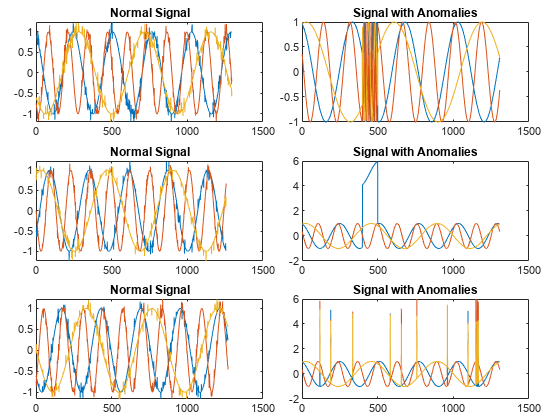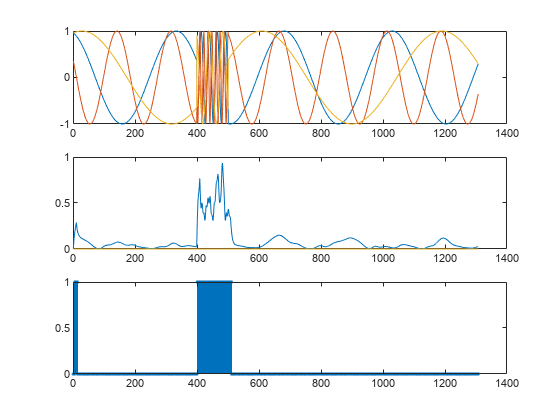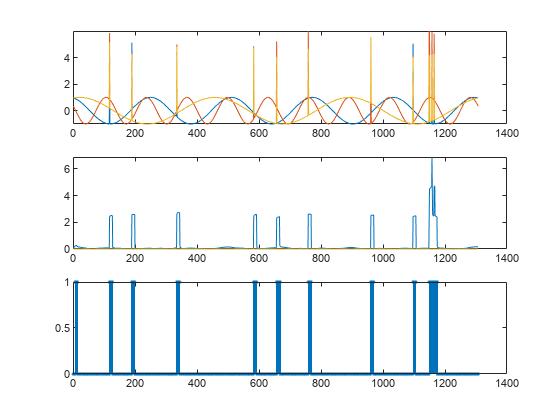Load the file sineWaveAnomalyData.mat, which contains two sets of synthetic three-channel sinusoidal signals.
sineWaveNormal contains the 10 sinusoids used to train the convolutional anomaly detector. Each signal has a series of small-amplitude impact-like imperfections but otherwise has stable amplitude and frequency.
sineWaveAbnormal contains three signals of similar length and amplitude to the training data. One of the signals has an abrupt, finite-time change in frequency. Another signal has a finite-duration amplitude change in one of its channels. A third has random spikes in each channel.
Plot three normal signals and the three signals with anomalies.
Create a long short-term memory (LSTM) forecaster object to detect the anomalies in the abnormal signals. Specify a window length of 10 samples.
Train the forecaster using the anomaly-free sinusoids. Use the training options for the adaptive moment estimation (Adam) optimizer and specify a maximum number of 100 epochs. For more information, see trainingOptions (Deep Learning Toolbox).
Iteration Epoch TimeElapsed LearnRate TrainingLoss
_________ _____ ___________ _________ ____________
1 1 00:00:01 0.001 0.6369
50 50 00:00:04 0.001 0.19706
100 100 00:00:07 0.001 0.064225
Training stopped: Max epochs completed
Computing threshold...
Threshold computation completed.
Use the trained detector to find the anomalies in the first signal. Reset the state of the detector. Stream the data one sample at a time and have the detector keep its state after each reading. Compute the reconstruction loss for each one-sample frame. Categorize signal regions where the loss exceeds a specified threshold as anomalous.
Plot the anomalous signal, the reconstruction loss, and the categorical array that declares each sample of the signal as being anomalous or not.
Reset the state of the detector. Find the anomalies in the third signal. Plot the anomalous signal, the reconstruction loss, and the categorical array that declares each sample of the signal as being anomalous or not.


